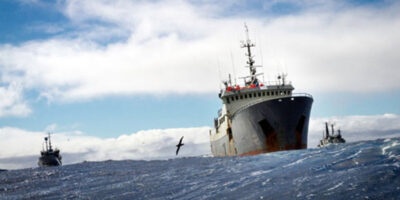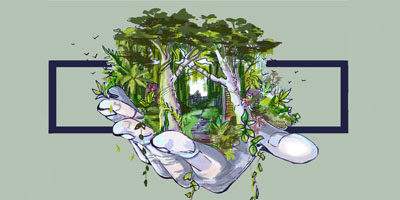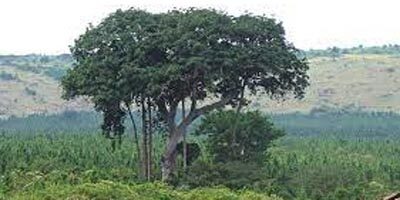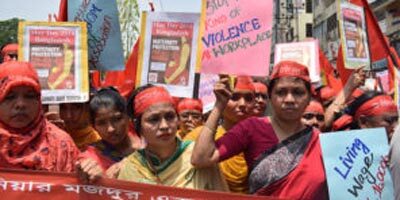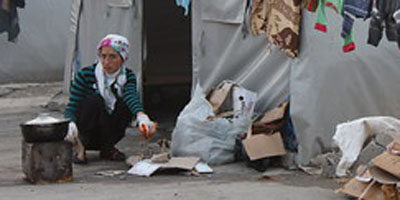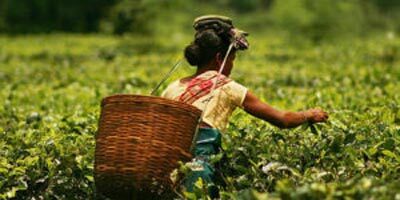The World Bank is preparing a new energy sector strategy that it says will respond to the need to increase energy access for the poor while supporting the shift towards environmentally-sustainable development. To provide large energy supplies, the Bank continues to invest in oil, coal and fossil fuel-powered plants that have large environmental impacts, so its energy strategy is a concern for environmentalist groups.
Environmentalist NGOs note progressive steps in the latest draft, but are concerned with several aspects:
– the lack of clear screening procedures and requirements for projects to promote decentralized and environmentally sustainable projects,
– the lack of a clear definition of “clean energy,”
– the promotion of hydropower without appropriate guidelines.
Positive Steps
Athena Ronquillo-Ballesteros is the Project Manager of International Financial Flows and Environment Projects at the World Resources Institute (WRI), a think-tank working to build sustainable solutions to environmental issues. Commenting on the draft strategy, she said, “The emphasis on climate change as a driver is particularly notable. In previous years this was incorporated into policy and planning. Today with the Strategic Framework on Development and Climate Change this has become an institution-wide imperative.”
If policies in the draft are implemented, the Bank will commit to:
– no new coal-power projects in middle and lower-middle income countries,
– Greenhouse gas emission analysis for all power generation projects,
– priority to be given to projects that increase fuel efficiency.
The draft continues to promote current Bank efforts to sustainably deliver energy to the poor, such as low-carbon cook stoves, renewables and energy-efficient infrastructure.
“The inclusion of provisions on improving energy access and catalysing the shift towards low carbon options is a step forward,” Ronquillo-Ballesteros said.
Problems
NGOs express concerns that the strategy will address neither energy access nor sustainable development adequately. “The strategy has to reflect the ambition and urgency needed to address pressing sustainable development challenges at hand, such as climate change, water stress, and declining air quality,” Ronquillo-Ballesteros said.
Heike Mainhardt-Gibbs works on environment and development issues, and is a senior consultant for Bank Information Center (BIC), a Washington NGO that monitors the World Bank. She thinks the new policy won’t be effective enough. “The strategy should focus more on alleviating energy poverty by providing clean, affordable and reliable energy services directly to the poor”.
Oil Change International is an NGO that campaigns for a transition from fossil fuel towards clean energy. Elisabeth Bast, its Managing Director, says there is a need to facilitate alternatives to large projects. “The metrics for measuring increased energy access include megawatts and kilometres of transmission lines, which do not support the decentralized, renewable energy projects required to achieve universal energy access by 2030.”
Ms Mainhardt-Gibbs noted a few loopholes in the draft strategy which can allow for carbon-heavy investments. “Although the Bank is claiming that they will be selective in their oil and gas investments, the draft fails to specify any new criteria or screening processes to implement this selectivity. The strategy needs to clarify how such an analysis will impact the decision-making process.”
Clean Energy
NGOs feel that the Bank’s definition of ‘clean energy’ is too vague and includes energy sources which may still be large polluters. “The clean energy definition should be tightened to include renewable energy and energy efficiency projects (excluding large hydropower over 10 megawatts) and should only include policy loans and transmission and distribution projects that support renewable energy and energy efficiency.”said Ms Bast.
“The World Resources Institute believes clear targets need to be made on the basis of clean energy definitions that include new and renewable energy sources only. It should not include more efficient coal, large hydro power and nuclear power as low carbon, clean energy sources,” Ronquillo-Ballesteros said.
Hydroelectric Projects
Although popularly promoted as reliable, renewable and low-emission, large hydropower as a centralized power source is unable to provide energy access to the poor off the grid. The draft strategy recognizes that economic, environmental, and social sustainability problems can come with hydropower development, but the Bank states that it is learning from various sources in order to minimise negative impacts.
Lori Pottinger, the editor of International Rivers’ quarterly publication World Rivers Review, is a long-time campaigner to raise international awareness about the problems with – and alternatives to – large dams in Africa. When asked if the Bank would be able to minimize hydropower impacts, Pottinger said, “We don’t believe the Bank has the capacity to fully address the negative impacts of large dams. We believe that the negative impacts of dams far outweigh their benefits, to the point of undermining the World Bank’s role in alleviating poverty.”
Even so, she notes that hydropower is not necessarily bad. “Hydropower can be a good option when done properly. For a dam to be truly sustainable, hydropower companies and dam financiers must be held accountable to a policy of access to information in which project risks and benefits are properly divulged to affected communities through culturally-appropriate forms of dialogue.”
She said that since hydropower projects are each different in their social and environmental situations, it is essential to have a broad analysis of each project before implementation.
“Much depends on the details: who is going to benefit, who will lose? Is the project a good fit for local needs? Are there better options?”
“The real test,” Bast said, “will be whether, in the coming years, there is a substantial increase in the percentages of energy loans supporting renewables, energy efficiency, and access for the poor.”
Investigation finds problems with World Bank loan for coal power plant
A review of a US$ 3.75 billion loan to Eskom coal power plant in South Africa (see Upstream Journal V.23 No.4) by the World Bank’s Inspection Panel found that the Bank did not take health, water scarcity and pressures on local services into account. And although the loan did not violate World Bank climate change policies (partly because the World Bank does not have explicit emission targets), it lacked steps to mitigate the projected 25 million metric tons of greenhouse gas emissions.
World Bank coal projects left tribal people in India displaced
and without income, NGO says
World Bank investments in coal power have left the local tribal people of Singrauli, India displaced and without livelihood, reports the Bretton Woods Project, a UK NGO. The area, once densely forested, is now a cluster of coal mines and coal-fired power plants. The transformation of the region into a power capital contributes to environmental degradation and undermines local health and livelihood. Yet there are proposals to increase their numbers, despite strains on the environment and with little provision to address issues such as local employment.
Besides affecting the local social and economic make up, the projects impacted local people who relied on the forests that were cleared away for mines and power plants. Many lost their original livelihoods without the skills to gain new jobs the projects bring to the region. They live in polluted environments with limited access to basic facilities and retaliatory actions taken against those who protest the lack of employment.
Local activists say that these people were left behind because the World Bank failed to do prior planning and issue-based analysis in the initial stages of funding, and needs to be more accountable for the long-term impacts of its projects.
World Bank increases funding to repressive Belarus regime
“Belarus joined the World Bank in 1992. Since then, the Bank’s lending commitments in Belarus have totaled US$865 million for 12 projects; about thirty national programs have received grant financing totaling US$22.8 million. Belarus is currently receiving World Bank financing for 5 infrastructure projects… Almost US$550 million or 60% of all loans Belarus received from the World Bank over the last 19 years were approved in 2009-2010,” – from the “Belarus Snapshot” on the World Bank website.
In December, President Alyaksandr Lukashenka was re-elected for the fourth time by 79.7 per cent of the votes in elections that international observers judged fell short of OSCE standards. Riot police violently dispersed a mainly peaceful demonstration held by opposition supporters at close of voting on December 19.
The election was followed by a clampdown on opposition activists, human rights defenders and journalists who were subjected to arbitrary detention, searches, threats and other forms of harassment by the authorities.
“In Belarus, human rights organisations which carry out independent human rights monitoring are systematically denied the right to exist and carry out ordinary activities. The Belarusian law and its implementation by the authorities blatantly violates international human rights standards binding Belarus”, says Souhayr Belhassen, President, International Federation for Human Rights.
What is Canada’s position on World Bank funding to Belarus? An email asking this, sent to Marie-Lucie Morin, Canada’s Executive Director at the World Bank
(m.morin@worldbank.org, see Upstream Journal Vol.24 No.1) in November, got no response.
Communities seek reparations for harm from World Bank-supported hydro project in Guatemala

Community members exhume the bodies of people killed in the violent massacres of the 1980’s and 90’s. Photo: Bert Hanson.
Caught in the repression of the 1980s, communities on the the Chixoy River were also affected when the Chixoy Dam was built, with funding from the World Bank and Inter-American Devbelopment Bank. 3,500 people were displaced; hundreds who refused to leave were killed, including women and children.
The development banks have always denied responsibility for the harm done building the dam, but in April 2010, a plan for reparations was agreed upon by all parties, including the government and local communities. Compensation for damage and loss is expected to cost US$154.5 million, and the development banks are expected to cover some of the cost. The president, however, has not signed the executive order needed to implement the agreement.
New World Bank lending program won’t have to comply with
social and environmental safeguards, activists say
The World Bank is launching a new lending instrument, the “Program for Results” (PforR), which is controversial because critics say it will be exempt from the suite of social and environmental safeguard policies – as well as financial management and procurement policies — that have guided World Bank project lending for more than twenty years. The World Bank now appears to want social, environmental and fiduciary issues handled on a case-by-case basis.
“The collapse of norms and standards for these operations is a game changer,” according to Nancy Alexander, director of the Economic Governance Program of the Heinrich Boell foundation.
The traditional suite of social and environmental safeguards will be abandoned, Alexander says, except for projects that are classified as “Category A.” These are projects that the World Bank says have “potentially significant, irreversible adverse impacts on the environment and/or affected people.”
An array of groups, including environmentalists and indigenous peoples, are unhappy that the PforR instrument will not have to comply with policies on Category B projects – those that the World Bank considers to have “potential adverse environmental impacts on human populations or environmentally important areas – including wetlands, forests, grasslands, and other natural habitats – which are less adverse than those of Category A projects.”
Consultation, information disclosure and grievance procedures are also to be defined case-by-case, not by existing policy. The lack of a clear information disclosure policy is a major step backwards, Alexander says. The absence of standards for consultation is also a concern, especially since the World Bank’s private sector arm now requires not only consultation but also the “free, prior and informed” consent of local indigenous communities for projects that may affect them.
Lack of financial accountability
The PforR program also allows a borrowing country to monitor its own use of World Bank financing, which will be exempt from compliance with existing financial and management policies. Similarly, the borrower will be responsible for self-policing and the reporting of fraud or corruption to the World Bank. And there will be no clear policies on procurement and financing standards. PforR will only require that they be ‘reasonable’ and ‘acceptable,’ and borrowers themselves will also conduct most financial auditing.
The World Bank response to some of these concerns is on its web site, worldbank.org.
PictureCommunity members exhume the bodies of people killed in the violent massacres of the 1980’s and 90’s. Photo: Bert Hanson.

